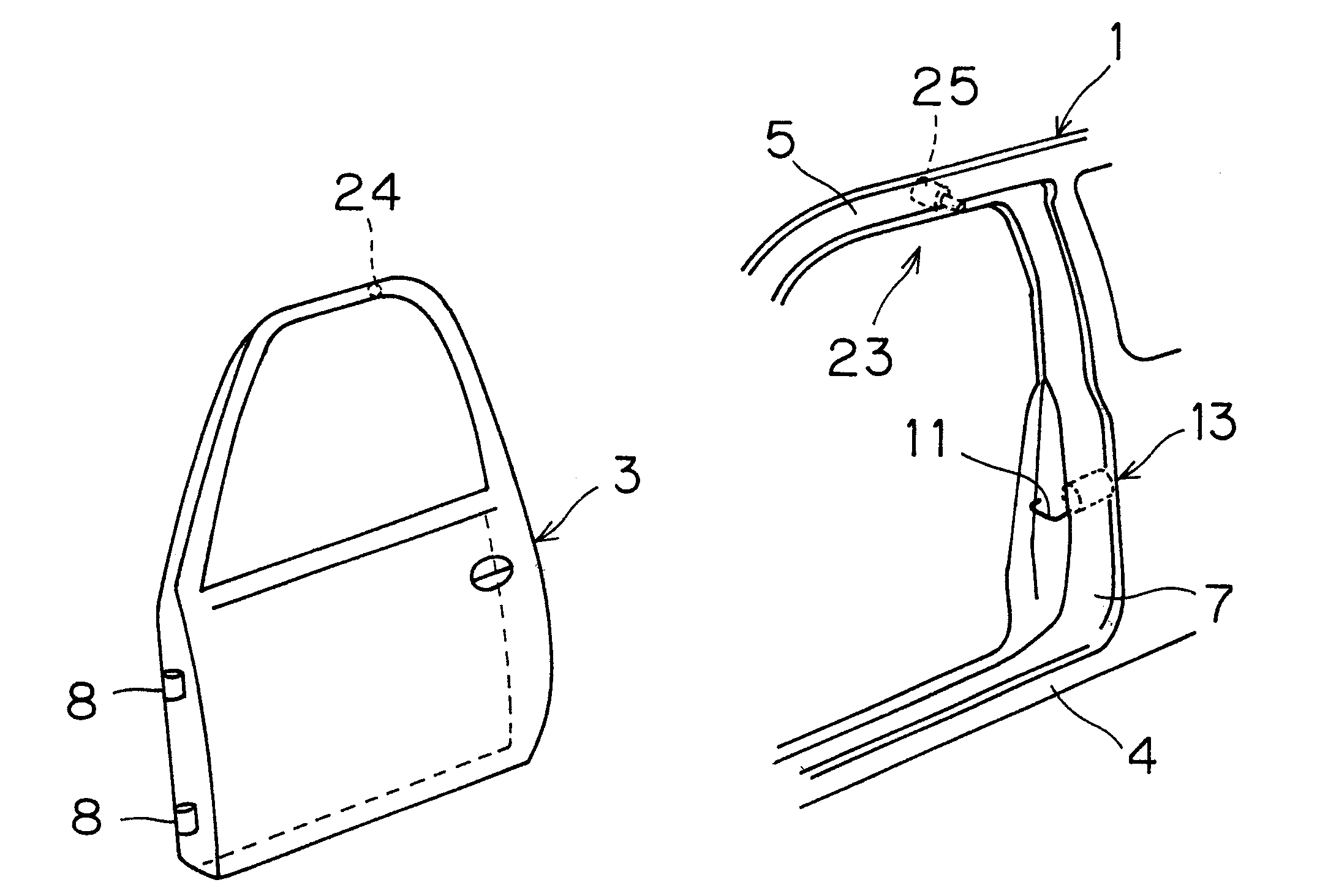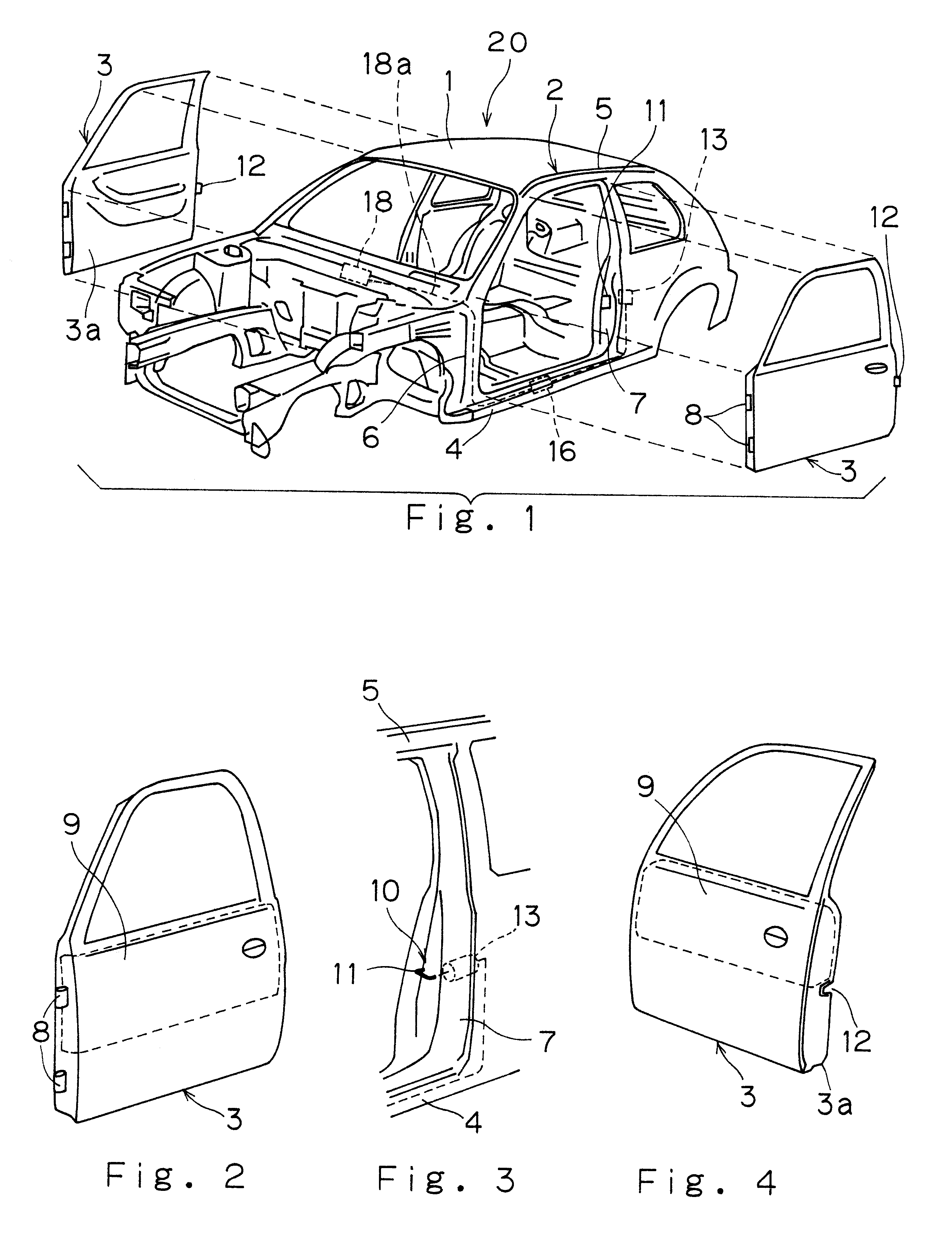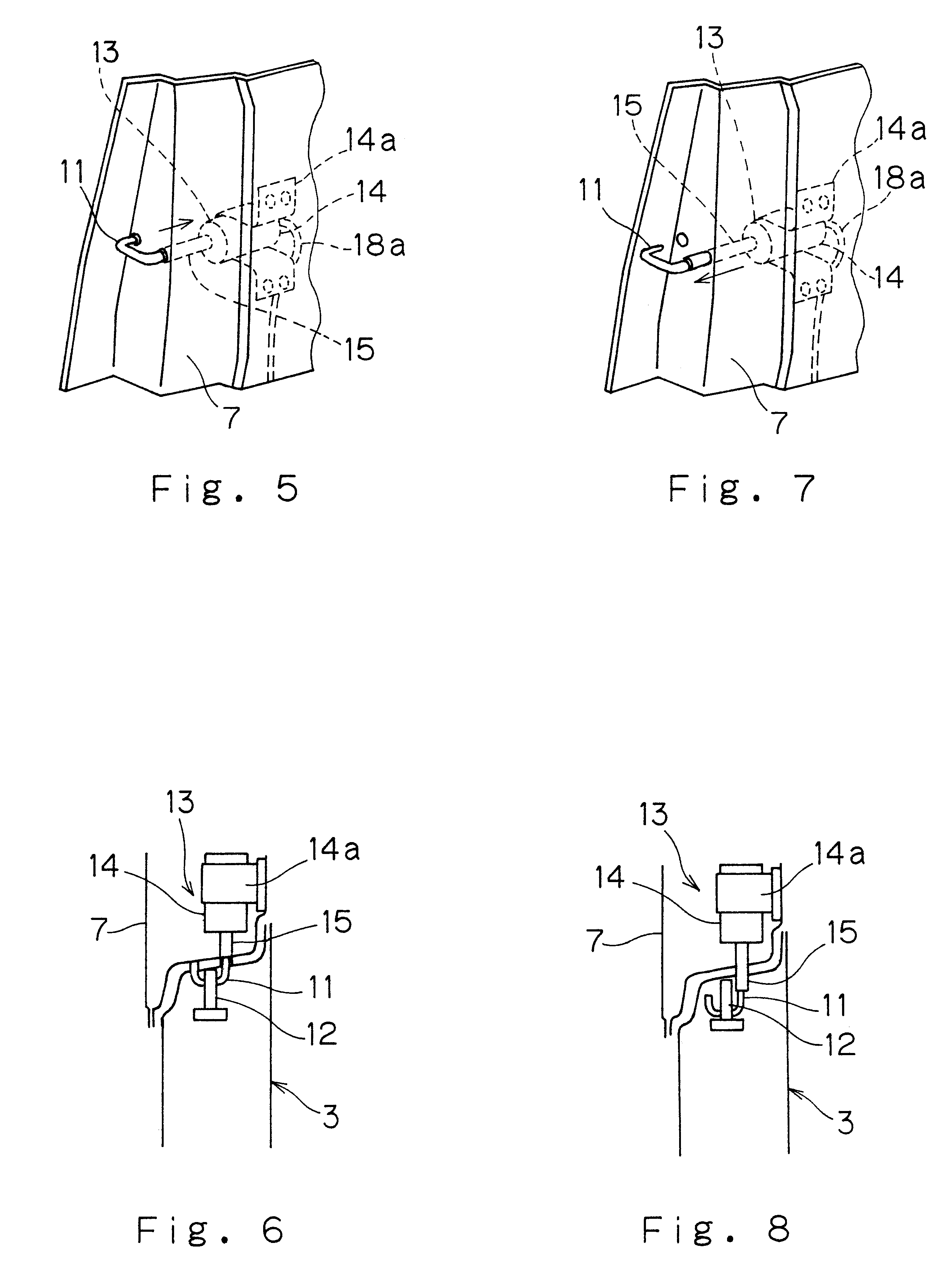Vehicle body side structure
a side structure and vehicle technology, applied in the field of vehicle body structure, can solve the problems of deformation of the center pillar, the strength of the door, and the inability to compress one or both
- Summary
- Abstract
- Description
- Claims
- Application Information
AI Technical Summary
Problems solved by technology
Method used
Image
Examples
second embodiment
In this modified embodiment, the collision sensor 16 outputs a collision signal to the controller 18 when the vehicle 17 makes an extraordinary approach from the side direction, and the door release mechanism 13 releases the engagement of the door 3 before the vehicle 17 collides. Accordingly, in this second embodiment, measures can be taken before the collision and can be fully prepared for the collision. However, it is necessary, if an actual collision has not occurred for a few seconds after the actuation of the door release mechanism 13, that the controller 18 output an engagement signal to the door release mechanism 13 so that the striker 11 returns to a normal engagement state and causes no hindrance for normal operation of the vehicle.
FIGS. 20-22 are diagrams for showing the air bag 21 of the second embodiment of the present invention. FIG. 20 is a perspective view of the door 3 with the air bag 21 packed in the door 3 as viewed from the cabin. FIG. 21 is a perspective view o...
first embodiment
Also, when the controller 18 receives a collision signal from the collision sensor 16, it immediately outputs an inflate air bag signal to the inflator I for the air bag 21 as well as a door release signal to the door release mechanism 13 to release the door engagement as in the above-mentioned
Next, the operation of the above-mentioned configuration will be explained with reference to the flow chart in FIG. 24. As seen in FIG. 24, a flowchart is shown that represents an algorithm for a program for the controller 18 when used in connection with the third embodiment of the present invention. In this embodiment, the algorithm of the controller 18 outputs a door release signal and an inflate airbag signal in response to a signal from collision sensor 16. In step S11, the controller 18 determines if a collision or crash is expected. If no collision signal is received by the controller 18 from the collision sensor 16, the controller proceeds to step S12, where the controller 18 outputs a ...
third embodiment
Referring now to FIGS. 25-30, a third embodiment is illustrated according to the present invention. FIG. 26 is an exploded perspective view of the door 3 with a air of frame members 22 each having a fragile portion 22a. FIG. 27 is a perspective view of the door 3 after the fragile portions 22a of the frame members 22 are bent as viewed from the interior of the vehicle. FIG. 28 is a partly cut-out plan view of the entire vehicle 20 as viewed from the top of the vehicle. FIG. 29 is a diagrammatic view showing the occupant 19 and the door 3 prior to a collision as viewed from the top of the vehicle 20. FIG. 30 is a diagrammatic view showing the door 3 and the occupant 19 after the side collision as viewed from the top of the vehicle 20.
In this third embodiment, explanation of structures that are the same as in the first embodiment are omitted for simplicity and only structures different from the first embodiment will be explained. Also, in the figures, the same numerals are used for el...
PUM
 Login to View More
Login to View More Abstract
Description
Claims
Application Information
 Login to View More
Login to View More - R&D
- Intellectual Property
- Life Sciences
- Materials
- Tech Scout
- Unparalleled Data Quality
- Higher Quality Content
- 60% Fewer Hallucinations
Browse by: Latest US Patents, China's latest patents, Technical Efficacy Thesaurus, Application Domain, Technology Topic, Popular Technical Reports.
© 2025 PatSnap. All rights reserved.Legal|Privacy policy|Modern Slavery Act Transparency Statement|Sitemap|About US| Contact US: help@patsnap.com



